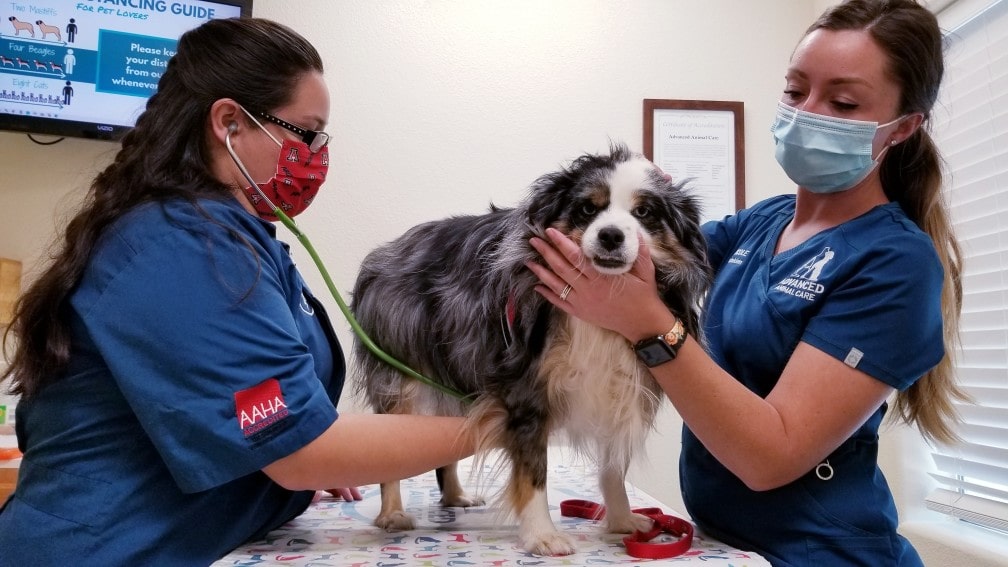Dogs are great companions. They help their humans with so many things every day. They are there to emotionally support you, to protect you, and would lay down their lives for you if needed. It is equally important to be there for them and take care of them.
One of the things that dog owners often do is that spay or neuter their dogs. However, some dog owners, especially Indian dog breed owners don’t know about dog spaying.
So if you have an unspayed female dog, (yes, we’re avoiding the B-word) it is important for you to know the symptoms that a female dog has when she is in heat.
It will help you to be prepared and recognize the signs in order to plan if you want to have puppies or not; prevent pregnancies in case you don’t want puppies. Dogs in heat can be unpredictable so knowing the symptoms would help you in avoiding potentially dangerous situations as well.
Your female dog menstruates
Firstly, in case you did not know, dogs, rather female dogs menstruate like every female mammal. It is unlike menstruation in women in its frequency and duration, the remaining aspects are pretty much the same.
Once a female dog has reached puberty, around when she is six months old, she will experience her first period signaling her fertility. While the first few cycles may be irregular, they would regularize within two years. Unlike humans, the normal duration of menstruation is of 3 weeks and it happens twice a year.
There is no phase of menopause so if your dog missed a period, you should consult a veterinarian as there may be an underlying medical condition.
That being said, there are signs to spot if your dog is in heat. So they should give you sufficient time to prepare for it if you pay enough attention to your dog’s behavior.
Things female dogs do when in heat
Most dogs show common traits while they are in heat. So it should be easy enough for you to recognize the behavior and take necessary actions. The common symptoms include:
- They urinate more frequently;
- Raise their legs in a different manner while peeing;
- Might even raise their legs when they see a male dog;
- Pay more attention to the male dogs than they do normally;
- They ask to be petted more;
- Some dogs may get lazier, while others may seem hyperactive so you need to pay attention to the behavioral changes;
- Tuck their tails or sit down when other dogs approach;
- This one is quite expected, they show signs of arousal;
- And they bleed. Technically the bleeding starts about a week before your dog is in heat, so it is a very clear symptom. The bleeding is heavy during the first 7-9 days of the heat cycle and then gradually decreases.
Some dogs may handle themselves quite well without human assistance, while others may be a hormonal, clingy mess. Do remember that the 21-day cycle is simply a suggestion and the duration may differ in different dogs, even if they are related.
Research shows that some female dogs run from home, even to faraway places, when in heat to either find mates or to protect themselves. It does not mean anything more than that it is simply an inherent instinct in them. It makes it important to take care of them when they are in heat.
How can you comfort and care for your female dog in heat?
All the raging hormones mean that your dog can take steps that can land her in serious trouble. You need to take care of your dog by protecting her from any potentially dangerous situations. Here are a few steps that you need to take:
1. Do not even think about off-leash walks.
Even if she is accustomed to walks without a leash, you should not take a chance. Leashed walks would allow you to protect her from any aggressive males (they know when the female is in heat), keep her from running away, and protect others in case she becomes aggressive.
2. Ensure that your dog is never alone outside.
Even if she goes only as far as into the yard, don’t let her be alone or at least keep an eye on her to protect her in case any male dogs enter the yard. No fence is high enough to keep male dogs away when they know a female is in heat. You may even keep her on a leash in the yard as well.
3. Modify her exercise routine according to her.
While some dogs become more active and need to be exercised more, others may feel tired throughout the day and should not be forced to overexert themselves. Pay attention to your dog’s needs and let her exercise accordingly.
4. Have her fitted with Tracking Chips
so you always know her location in case she somehow manages to run away. It will also help you when she is not in heat.
5. Use smells such as Menthol
On the end of her tail to mask the smell of the hormones that are being released. It will help her to avoid male dogs.
6. Try Heat Pants.
They help to catch the discharges and keep the dog as well as the surroundings clean. However, they do not prevent the act of mating.
7. Consult a Vet.
Even though it is quite a normal thing, you can consult the vet for additional information on how to care for your dog or if she is acting erratically. You can also get her checked after the fertile period has passed to see if she is pregnant or not.
A summary of a dog’s heat cycle
There are two cycles in a year and four phases in a cycle.
- Proestrus: (7- 10 days) During this phase of the cycle the personality and appetite changes begin and your dog starts bleeding.
- Estrus: (5-14 days) This is the actual fertile period when she looks for male companionship and is even willing to run away from home. By this stage, the discharge has lightened significantly and eventually stops completely.
- Diestrus: (60-90 days) By now your dog is either pregnant or infertile. In the case of pregnancy, she will carry the pups for 60 days.
- Anestrus: (100-150 days) This is the resting stage until the cycle starts again.
Please note that there isn’t any fixed duration for the cycle and its stages, it varies among dogs.
Want to know more about dogs and their health issues, visit the dog website in India!

 DogExpress
DogExpress


















 in Chandigarh, India.
in Chandigarh, India. 
